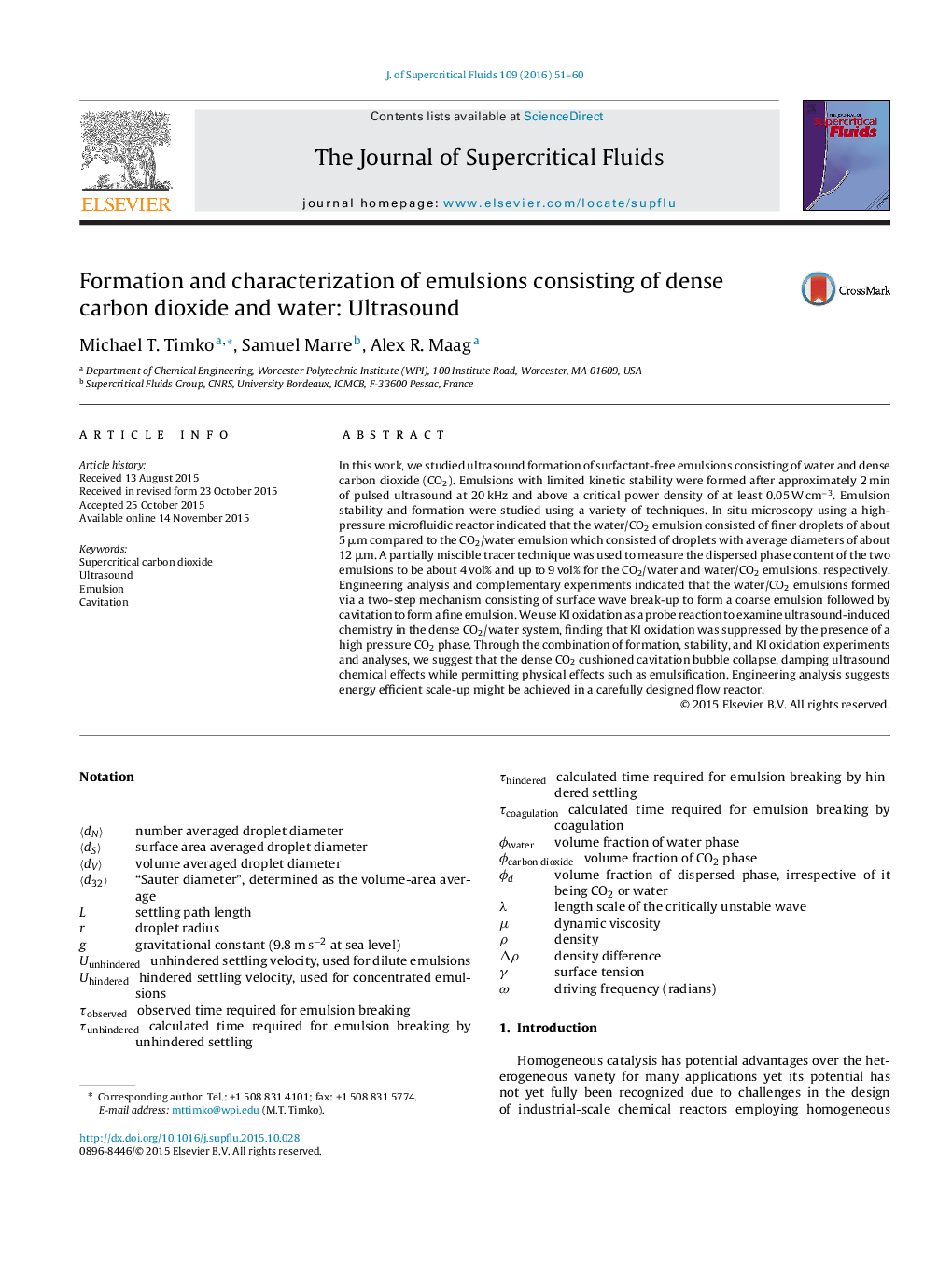| کد مقاله | کد نشریه | سال انتشار | مقاله انگلیسی | نسخه تمام متن |
|---|---|---|---|---|
| 230197 | 1427368 | 2016 | 10 صفحه PDF | دانلود رایگان |
• Ultrasound is used to generate emulsions consisting of liquid CO2 and water.
• Emulsions volume fractions and droplet diameters measured.
• Emulsion formation proceeds via wave formation and cushioned cavitation.
• Energy efficient scale-up possible with careful reactor design.
In this work, we studied ultrasound formation of surfactant-free emulsions consisting of water and dense carbon dioxide (CO2). Emulsions with limited kinetic stability were formed after approximately 2 min of pulsed ultrasound at 20 kHz and above a critical power density of at least 0.05 W cm−3. Emulsion stability and formation were studied using a variety of techniques. In situ microscopy using a high-pressure microfluidic reactor indicated that the water/CO2 emulsion consisted of finer droplets of about 5 μm compared to the CO2/water emulsion which consisted of droplets with average diameters of about 12 μm. A partially miscible tracer technique was used to measure the dispersed phase content of the two emulsions to be about 4 vol% and up to 9 vol% for the CO2/water and water/CO2 emulsions, respectively. Engineering analysis and complementary experiments indicated that the water/CO2 emulsions formed via a two-step mechanism consisting of surface wave break-up to form a coarse emulsion followed by cavitation to form a fine emulsion. We use KI oxidation as a probe reaction to examine ultrasound-induced chemistry in the dense CO2/water system, finding that KI oxidation was suppressed by the presence of a high pressure CO2 phase. Through the combination of formation, stability, and KI oxidation experiments and analyses, we suggest that the dense CO2 cushioned cavitation bubble collapse, damping ultrasound chemical effects while permitting physical effects such as emulsification. Engineering analysis suggests energy efficient scale-up might be achieved in a carefully designed flow reactor.
Figure optionsDownload as PowerPoint slide
Journal: The Journal of Supercritical Fluids - Volume 109, March 2016, Pages 51–60
